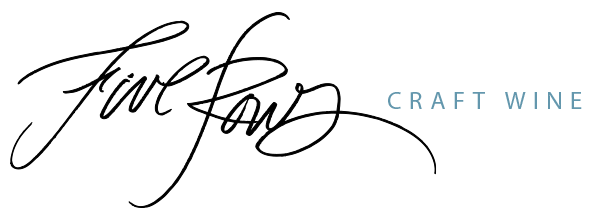2020 Syrah
"Could this be right?"
I was astonished when I looked into the eyepiece of my refractometer and saw a line between 25 and 26 degrees Brix. In an instant, I had officially vacated my Syrah comfort zone and entered some kind of wild outback of unknown possibilities.
Having just collected and prepared my first berry sample of 2020 Syrah, I had hopes of 22-23 degrees Brix based on the way the berries tasted. The staggering results of the test meant the grapes had accumulated much higher sugar than we had ever seen before and were likely ready to harvest anytime, pending TA and pH analysis.
In the lead up to harvest, the sugar content of berries, measured in degrees Brix, is just one of several variables we monitor to give us an idea of overall ripeness. Depending on the varietal, I generally use degrees Brix as a gauge of when to start paying attention to more important parameters like acidity, seed ripeness, skin consistency and flavour development. Syrah has an interesting way of showing intense pepper flavour early in development that resolves into a combination of dark fruit and less intense pepper at peak ripeness. In 2020, we were deep into the dark fruit zone by the time I started sampling.
One culprit for the high sugar result was the noticeable onset of berry shrivel. In vintages where the hot and dry conditions persist into the fall, berries can start to shed water and "raisin" a bit. This is particularly common in our Syrah vineyards and usually a good indicator of when they should be picked.
It was thus decided to hand harvest 850kg of fruit from our Clone 7 block and 850kg from our Clone 100 block on October 14th. The sample proved accurate as the Syrah came in testing 25.8 degree Brix. Only after consulting literature on fermenting must with high sugar content, did I feel confident that I could handle these conditions. The increase in alcohol produced by the excess sugar can cause havoc with yeast struggling to finish a fermentation, so selecting proper yeast strains and nutrients, and managing fermentation temperature became even more critical than usual.
Following a five day cold soak, the two bins were allowed to start fermenting naturally for the first third of sugar depletion. The Clone 100 bin was then inoculated with RX60 yeast and the Clone 7 with FX10, to aid in achieving dryness. As expected, the fermentations were long (10 days) and ran pretty hot (34C), but did finish dry. It was apparent in tasting at the press tray that this new wine was something different and potentially very special. Malolactic fermentation took place in four French oak barrels (25% new oak) where the wine was allowed to age for 24 months, before blending and bottling on April 6th, 2023.
One thing I love about making Syrah in a climate like Niagara is the vast array of wine styles possible based on vintage variation. The core terroir elements (pepper, floral notes, smoked meat, dark chocolate) are always present, but there appears to be an endless continuum of fruit components and savoury textural elements based on the vintage. As a youthful winemaker, I used to worry that this meant inconsistent wines, but now I fully embrace the differences. Enjoying a 2019 and 2020 Syrah side by side can illustrate this wonderful contrast in styles.
The 2020 Five Rows Syrah is a bold, ripe wine; exhibiting flavours, textures and colour that probably make it a bit of a one-off based on previous vintages. For those who prefer a more mellow Syrah, you may want to give it some time in bottle (3+ years).
